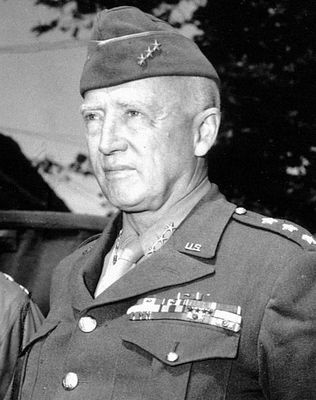“NO BASTARD ever won a war by dying for his country. You win it by making the other poor dumb bastard die for his country,” said General George S. Patton, Jr, in his speech to the 6th Armored Division of the US army in 1944.
Patton did everything with conviction. Even in his casual talks with the men he commanded, he stressed the point that you fight and kill others to win in a war. ‘Attack, attack, and when in doubt, attack again’ was his mantra. He cajoled his men, shouted at them, slapped them on occasion and drove them so hard that his Third Army became, arguably, the best fighting force among the Allies.
Patton hailed from a family that had a military background. As a child, he often said he would one day become General Patton. In 1916, after the US entered World War I, he was appointed commander of the headquarters company of the American Expeditionary Force in France. His lifelong affair with tanks began here. He requested General John J. Pershing, the commander of the AEF, to transfer him to the tank corps. In 1917, Patton was asked to establish a light tank school for the First US army. He was among the first American soldiers to work on development of the tank arm of the US army.

Patton’s light tank school became a reality in February 1918, but he had no tanks to train his troops with. The troops trained with plywood tanks that had turrets fitted with 8mm guns. By May that year, Patton’s tank school had a contingent of 25 Renault FT light tanks, courtesy of the French. In the last year of the war, Patton led a tank battalion in the Saint-Mihiel and Meuse-Argonne offensives.
During the Meuse-Argonne offensive, he thought of a novel way to refuel tanks: by tying jerrycans filled with fuel to each tank, so they could dash ahead without waiting for replenishments. His battalion also set up the first roving maintenance shop in a tank to tackle breakdowns without delay.
Patton was a lieutenant general when the US army landed in north Africa to take on Erwin Rommel and his German Africa Korps in 1942. His Seventh Army recaptured Sicily in just over a month in 1943. Entrusted with the command of the newly created Third Army, Patton landed in Europe soon after the Normandy landings. He launched his offensive without slightest delay from the Cherbourg peninsula. From then on, nobody could stop the juggernaut of the Third Army. Metz, a heavily fortified town which had not fallen in 400 years, fell to the onslaught of his tanks.
Like a tidal wave, the Third Army rolled on across France. It achieved a monumental feat in the Battle of the Bulge at the end of 1944, when it reached Bastogne covering 160km on roads covered with snow. As more than 2,50,000 German troops commanded by Field Marshal Gerd von Rundstedt launched a massive attack on the Allies, General Dwight D. Eisenhower asked Patton, “Could you make it to Bastogne in three days?” Patton reached in two, thus turning the tide.
After the defeat of Germany, Patton was made military governor of Bavaria. He died in an automobile accident in Heidelberg in 1945.






